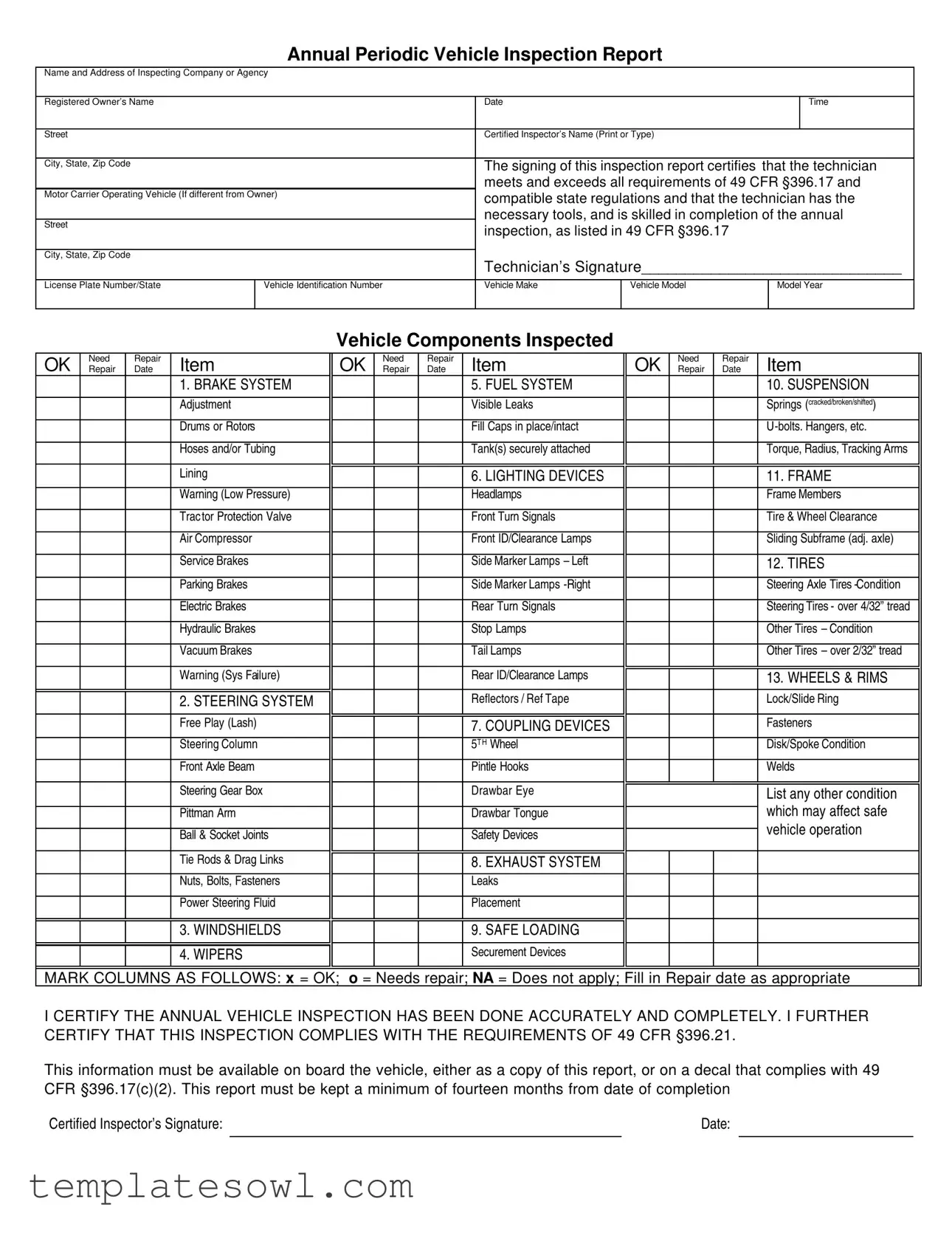What is the purpose of the DOT Vehicle Inspection form?
The DOT Vehicle Inspection form is designed to document the annual inspection of commercial motor vehicles. Its purpose is to ensure that vehicles meet safety standards outlined in federal regulations. The form provides details about the condition of various vehicle components and confirms compliance with safety requirements.
What information is required on the inspection report?
The report must include the name and address of the inspecting agency, the registered owner's name, the date and time of inspection, and the certified inspector’s name. It should also capture the vehicle's information, including the license plate number, vehicle identification number (VIN), make, model, and year. Additionally, the inspection results for various vehicle components must be recorded, indicating whether they are satisfactory or need repair.
How long must the inspection report be kept on file?
The inspection report must be retained for a minimum of fourteen months from the date it was completed. This requirement ensures that there is a documented history of the vehicle’s safety inspections, which may be reviewed by regulatory authorities if necessary.
What qualifies an inspector to perform DOT vehicle inspections?
An inspector must understand the inspection criteria and be knowledgeable about the methods and tools used during inspections. They can qualify through various means including completing an accredited training program or having substantial experience related to vehicle maintenance or operating procedures. The qualifications are crucial to ensure that inspections are performed accurately and safely.
What components of the vehicle are inspected?
The DOT Vehicle Inspection form requires the inspection of several key components, including the brake system, steering system, windshield wipers, lighting devices, tires, wheels and rims, exhaust system, and coupling devices, among others. Each component is assessed for safety to ensure the vehicle is roadworthy.
What does it mean if a component is marked as "Needs Repair"?
A component marked as "Needs Repair" indicates that it has been found deficient during the inspection. This designation implies that the identified issue could affect the vehicle's safe operation and should be addressed promptly before the vehicle is used on public roads.
Who is responsible for ensuring compliance with the inspection standards?
The motor carrier, or vehicle owner, is responsible for ensuring that all inspections are conducted by qualified personnel. This includes verifying that the inspector’s qualifications and training meet the standards established by federal regulations. Compliance is crucial for the safety of all road users.
Is the completed inspection report required to be carried in the vehicle?
Yes, the completed inspection report must be accessible on board the vehicle. It can be in the form of a copy of the report or as a decal that meets specific guidelines outlined in federal regulations. Having the report available is essential for inspections by law enforcement or regulatory agencies.

